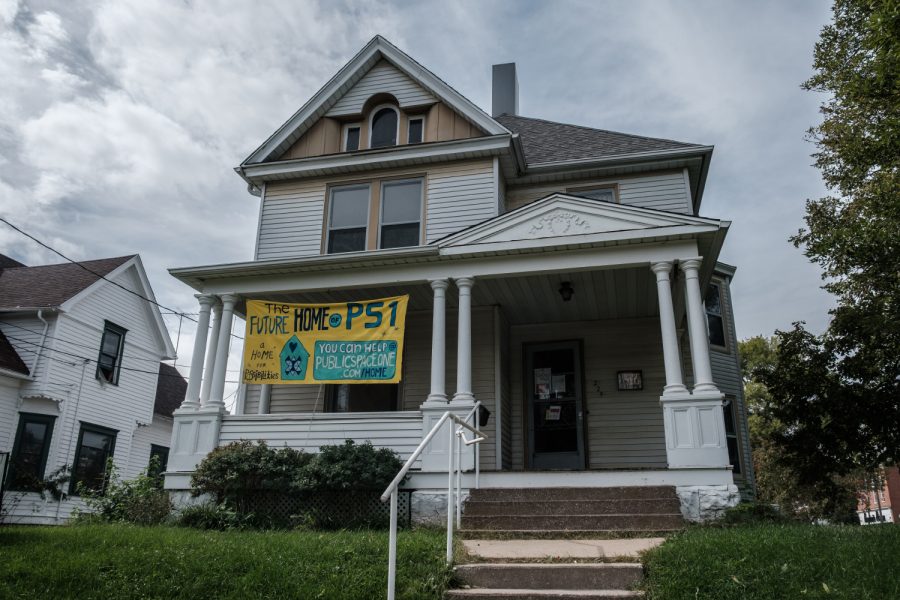Exhibit Time Now For Ghosts explores connection between blackness and the natural world
Space Place One will display the Afrofuturistic gallery exhibit Time Now For Ghosts throughout the month of March.
Public Space One is seen at the new location on North Gilbert Street on Thursday, October 3, 2019. PS1 previously resided in the bottom floor of the Wesley Student Center.
March 13, 2020
Public Space One stood tall against the vicious winds of Friday evening. Inside the white walls of the home-turned-artistic space was the Afrofuturistic gallery collection entitled Time Now For Ghosts which will be open till March 29.
Due to increased measures taken to help prevent the spread of COVID-19, the exhibit will only be open by appointment until further notice, according to an email to The Daily Iowan from Public Space One program director Kalmia Strong.
For a moment, walking in felt like someone was inviting me into their own home. The wooden floors squeaked softly as people went from room to room to view the works of the six curated artists, all of whom were black women.
Jamillah Hinson, a resident at The Center for Afrofuturist Studies, is the curator of Time Now For Ghosts. When curating the show, she reached out to artists Krista Franklin and Franchesca LaMarre and put out an open call for other artists, ending up with a nationwide set of featured creators.
“It’s a pretty broad show, I would say,” Hinson said. “It’s kind of central on ideas and conversations around representation of the natural world within Afrofuturism. As for the artists in the show, they all have very different styles and add a lot of layers to the show.”
The term Afrofuturism was coined in 1993 by Mark Dery and refers to art that addresses the concerns of the African diaspora through a science fiction lense. To Hinson, Afrofuturism imagines blackness in varying degrees of reality.
RELATED: Midwestern creators push for a more nuanced definition of Midwestern art and detail
The curator said she was excited about the different mediums used by all the artists and the atmosphere the familiarity of an old house space creates.
According to Hinson, the space creates an open atmosphere that still retains an intimate feeling. She said she looks forward to the conversations that will be allowed to come up through the space and the art.
One of the artists who may spark such conversations is Liz Gre. Based in Omaha, Gre does a variety of work using writing and sound.
For Gre’s portion of the gallery, she focuses on the relationship between black women and their maternal figures, specifically their grandmothers. She said she was partially inspired by a speech given by Jace Clayton on how white noise should not be ignored, but instead be used as an alarm.
“I considered the voices of memories in the past as another iteration of that alarm, so in the piece there are moments where there’s like a white noise that kind of is almost like a jolting,” Gre said. “It signals a shift.”
Chicago-based artist and poet Krista Franklin also has her work displayed at the gallery. Her paintings and handmade paper artwork deal with the central theme of the connection between blackness and the natural world, while also drawing on Trinidadian folklore.
“I think [the exhibition] is a beautiful opportunity for an expansion of learning of different cultures and different concepts, different kinds of thought as well, and vision,” Franklin said. “I really just hope that the city and the state really, in the nearest vicinity of the exhibition space, has the opportunity and makes the opportunity to go.”
According to Franklin, just having the ability to be an artist is exciting, as society is often not financially forgiving toward artists.
“I feel very, very lucky to be able to make that work and to write poems and to write creative writing and teach it in 21st century America as a black woman,” Franklin said. “I feel very, very good about just the power in the agency that I have to do that.”



